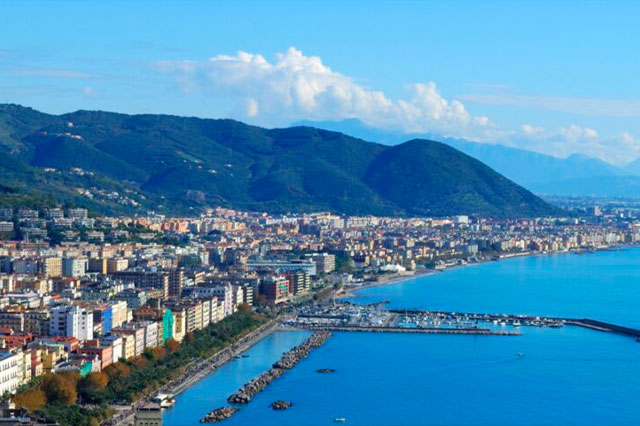Salerno "Opulenta" Le Guide di Paestum e Velia en

The city of Salerno enjoys an excellent position, just in the middle, between the Amalfi coast and the Cilento coast.
Originally etruscan, it was conquered later by Romans, Byzantines and Lombards. In 849 a.D. Salerno became the capital of the Lombard territory. It was called "Opulenta Salernum", as we read on some coins minted between the tenth and the eleventh century. In that time, the city had an important economical and cultural power in Southern Italy.
The Arechi castle lies on Mount Bonadies and from there it is possible to see the whole town. In the old centre, during the visit, there are different beautiful palaces and churches, that are evidences of a glorious past. First of all, the cathedral built by the Norman duke Robert Guiscard and considered to be the real “jewel” of the city. It is a magnificent example of how the original Romanesque architecture is integrated with Baroque decorations added later. Impressive is the extraordinary cosmatesque floor of the presbytery, the beautiful mosaics of the apses, the two amazing ambos before the altar.
The crypt is surprising. It’s a mixture of marble inlays, frescoes, golden stucco, busts in white marble and copper. In the centre there is the massive two-faced bronze statue of the protector of the city, Saint Matthew. He was evangelist and apostle, whose relics are preserved under the altar.
Another noble example of Baroque art is the church of Saint George. There are paintings of Angelo and Francesco Solimena, father and son, well-known painters of the seventeenth century. There is also one of Andrea Sabatini representing the holy Virgin with Jesus child.
A very significant monument to understand the history of the city is the complex of San Pietro a corte, the only lombard church that has survived during the centuries. Under the church, in the underground there are remains of roman thermal baths.
Certainly worth a visit is the Diocesan Museum, the most important “container” artworks in Salerno: the ivory panels, the most complete and extensive collection of tablets and urns of the Christian Middle Ages in the world; the so called Exultet in 11 sheets, of the thirteenth century; a rich collection of paintings ranging from the fourteenth to the seventeenth century and even more.